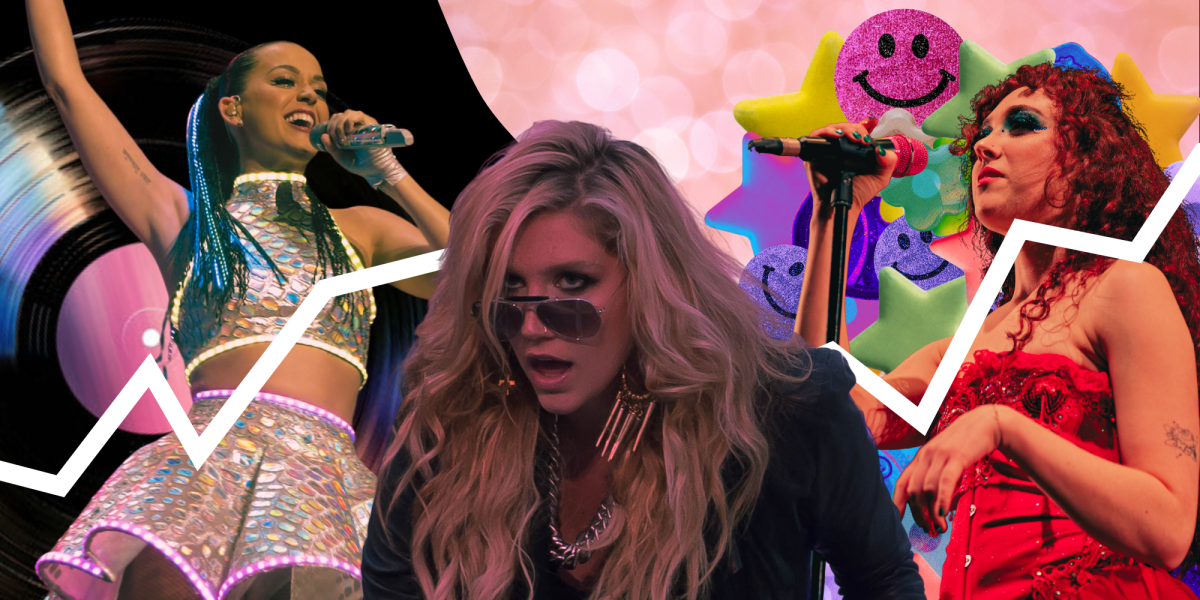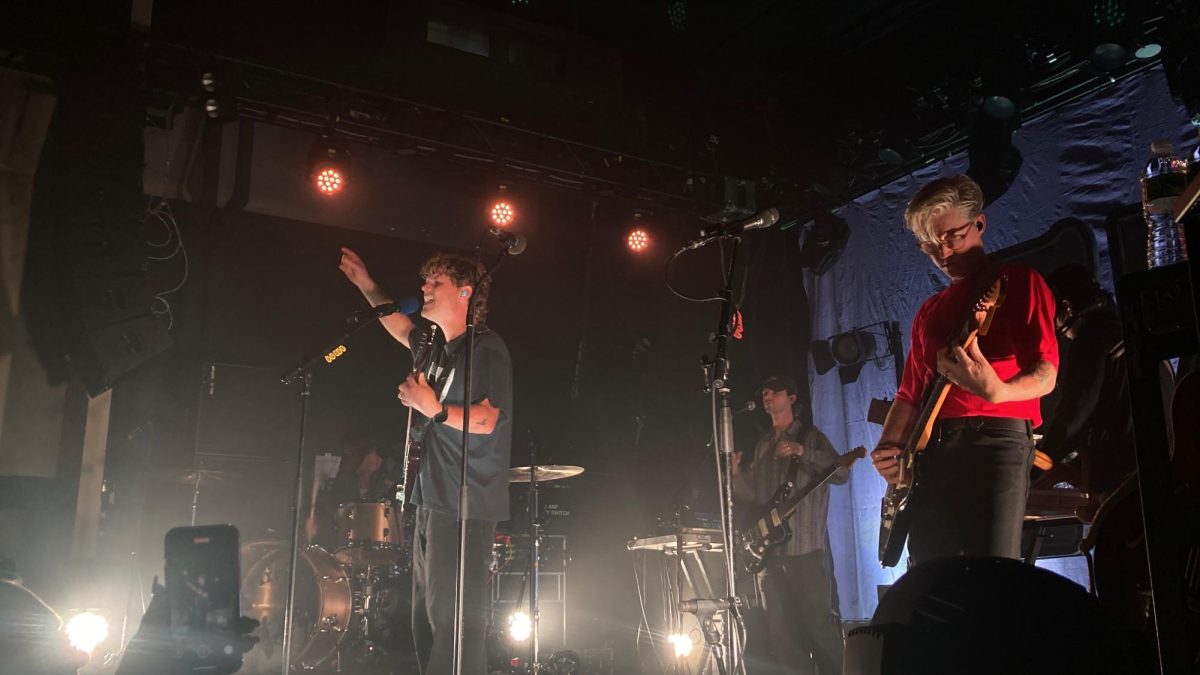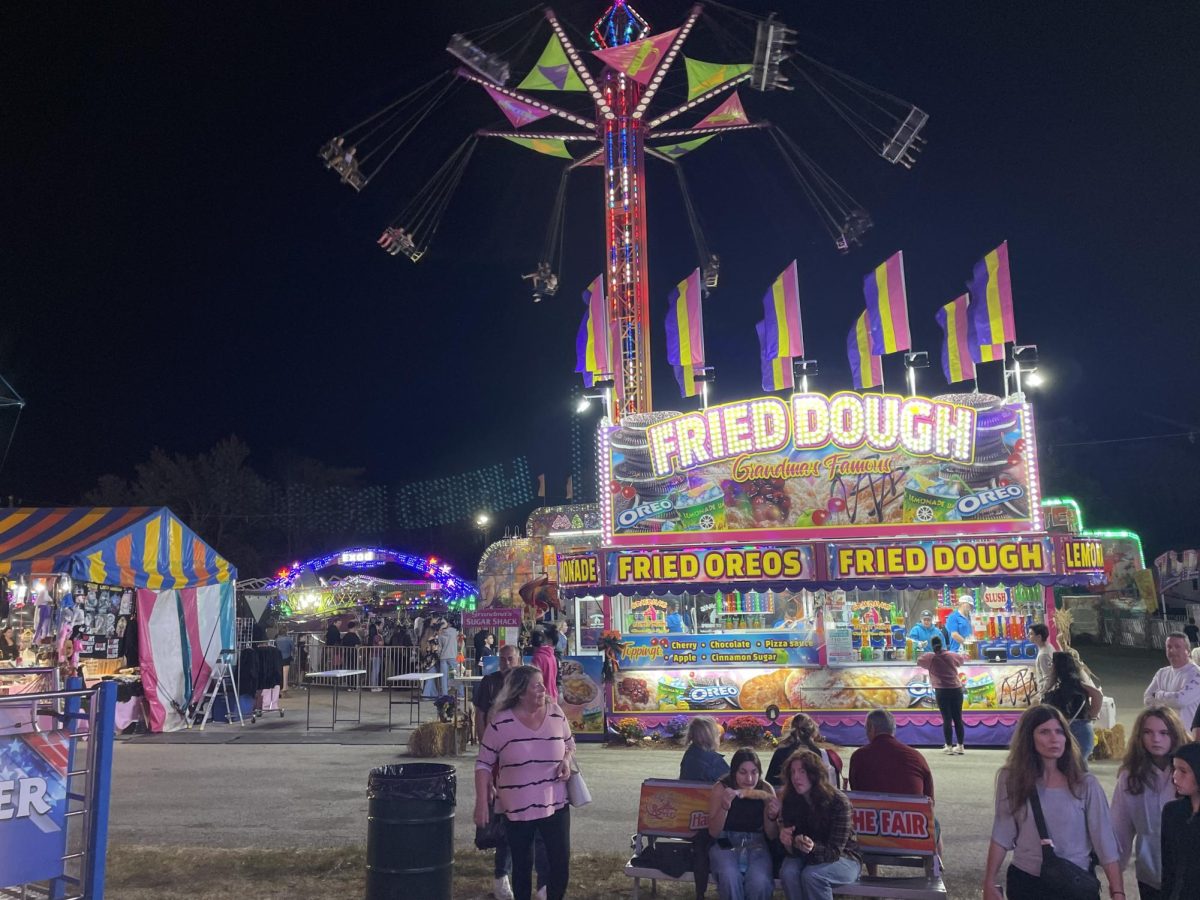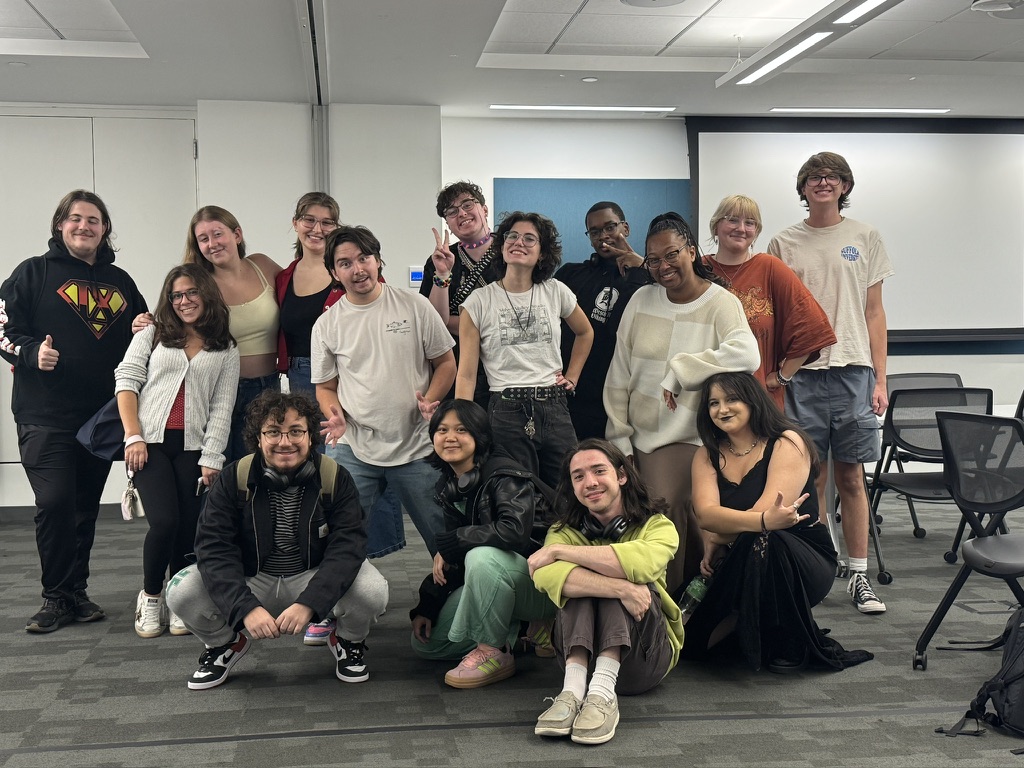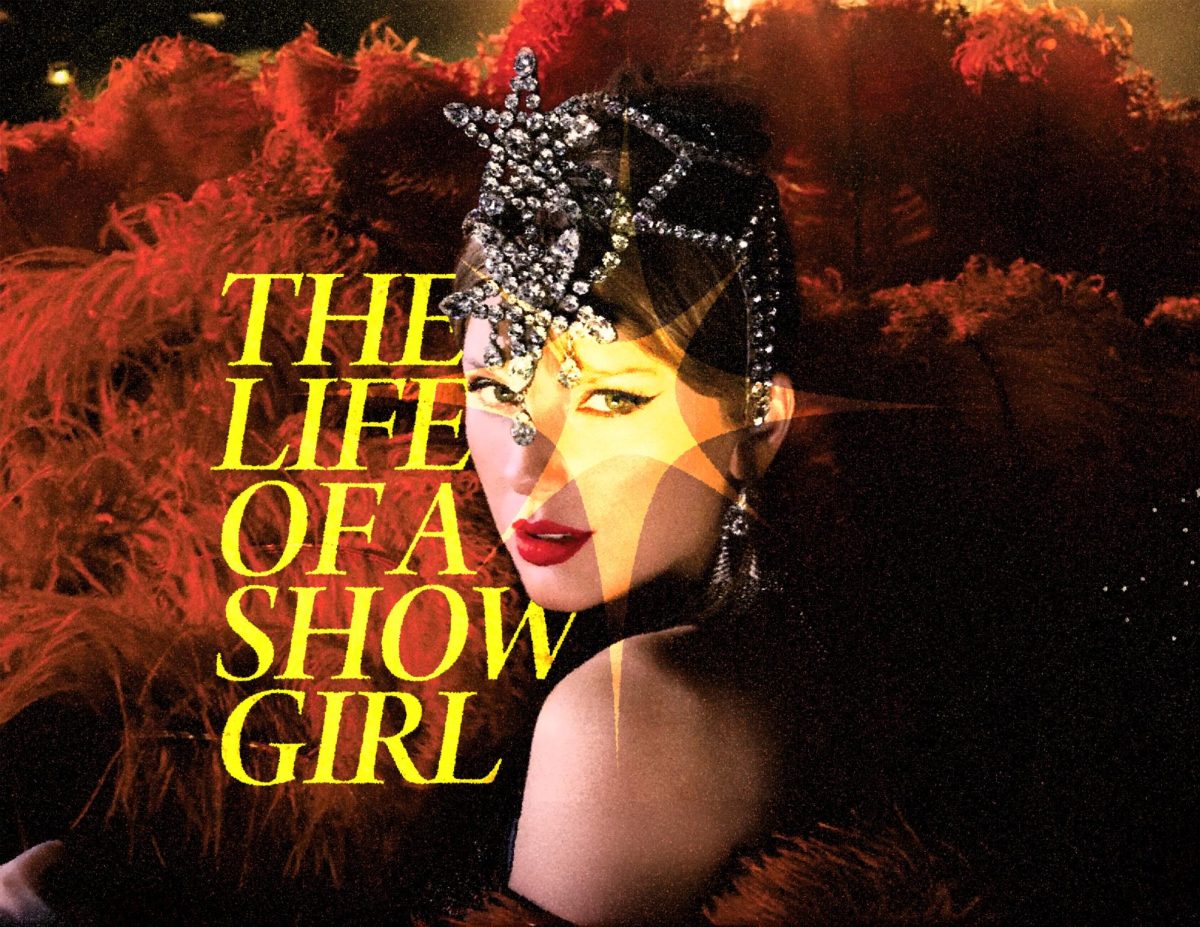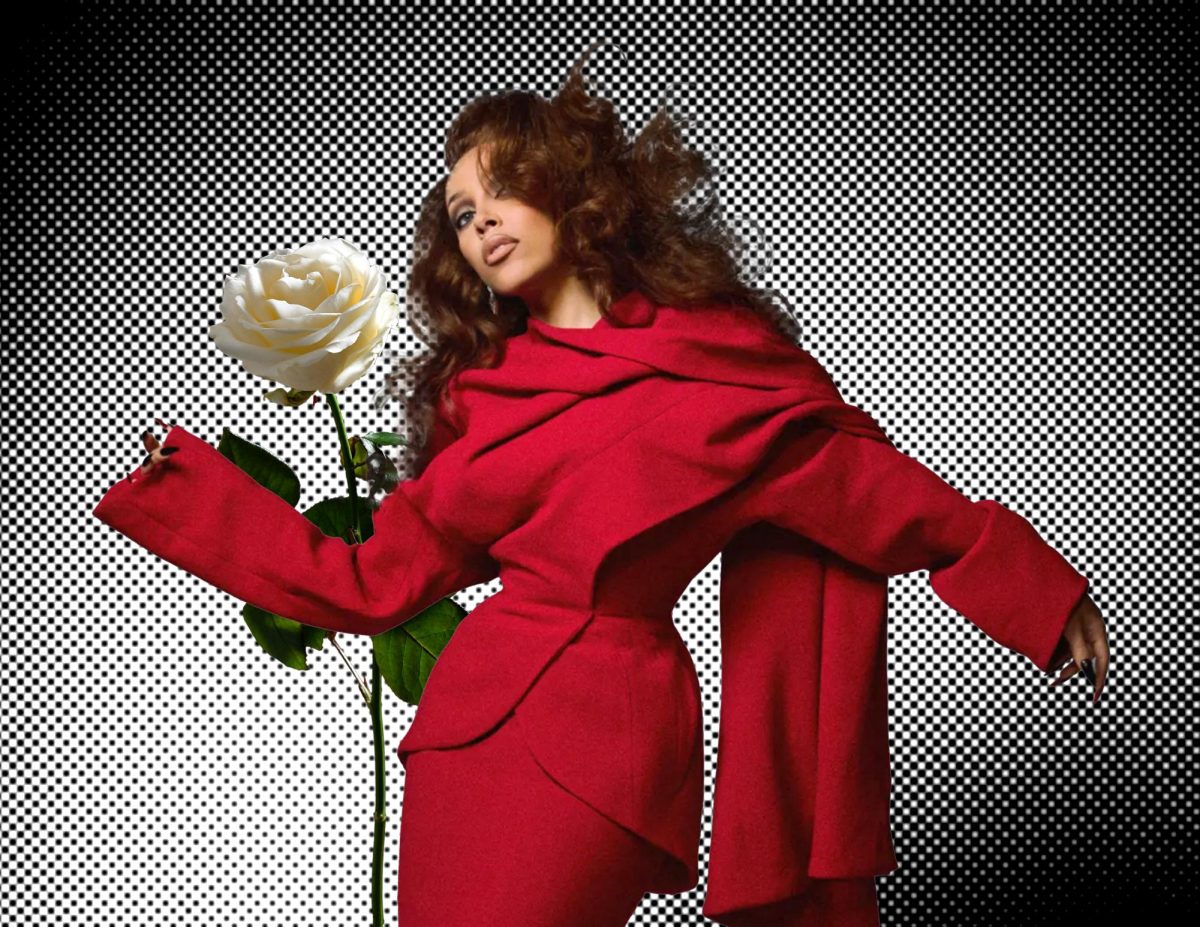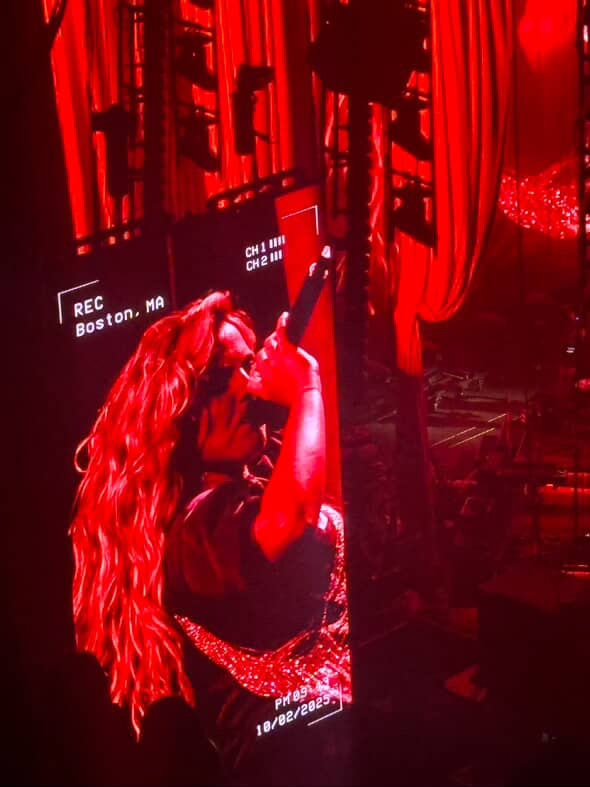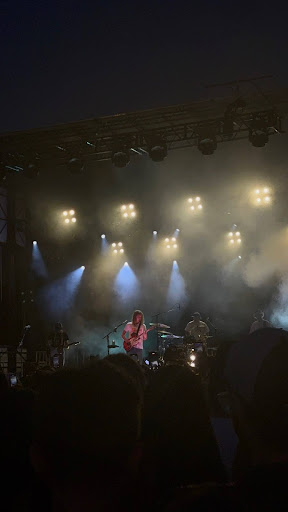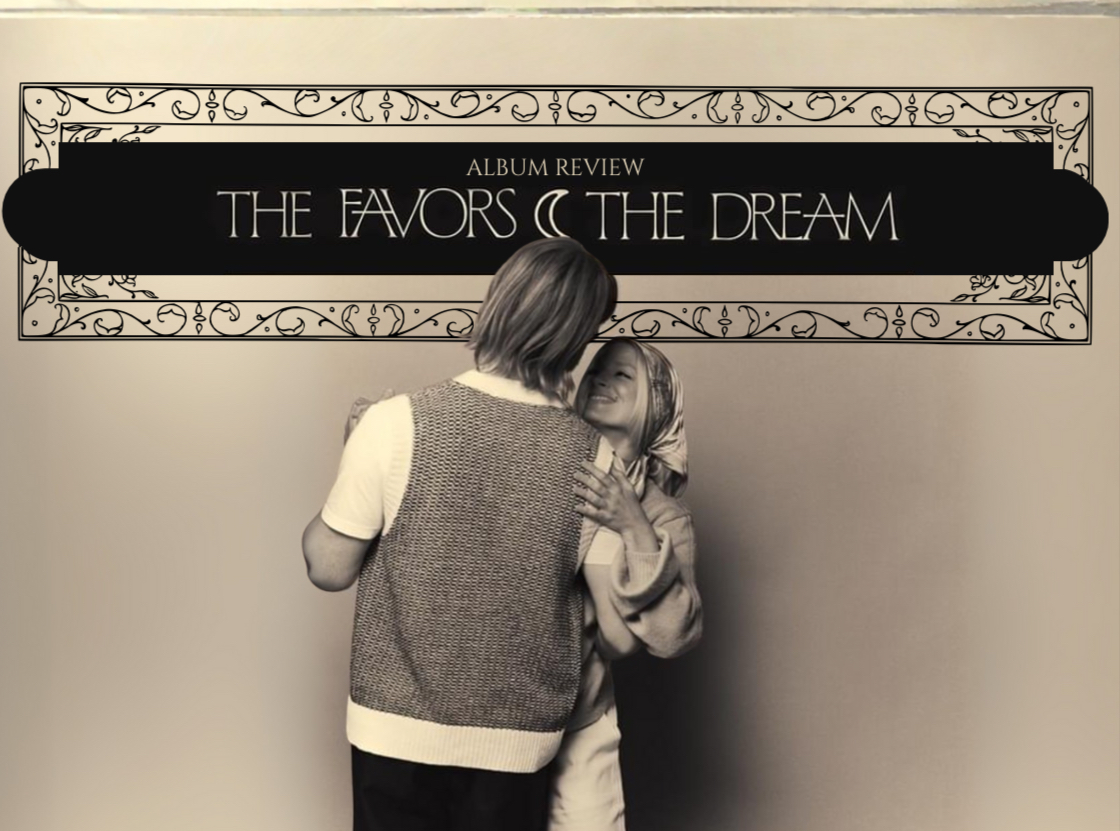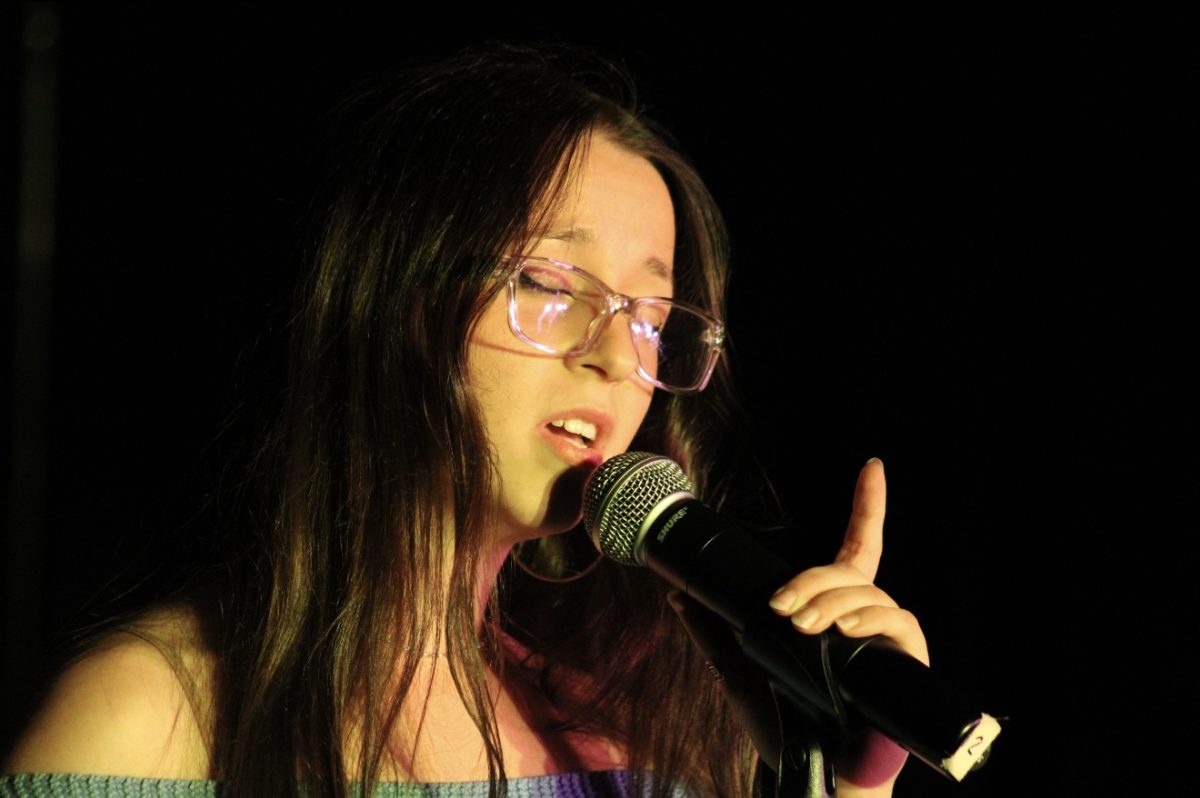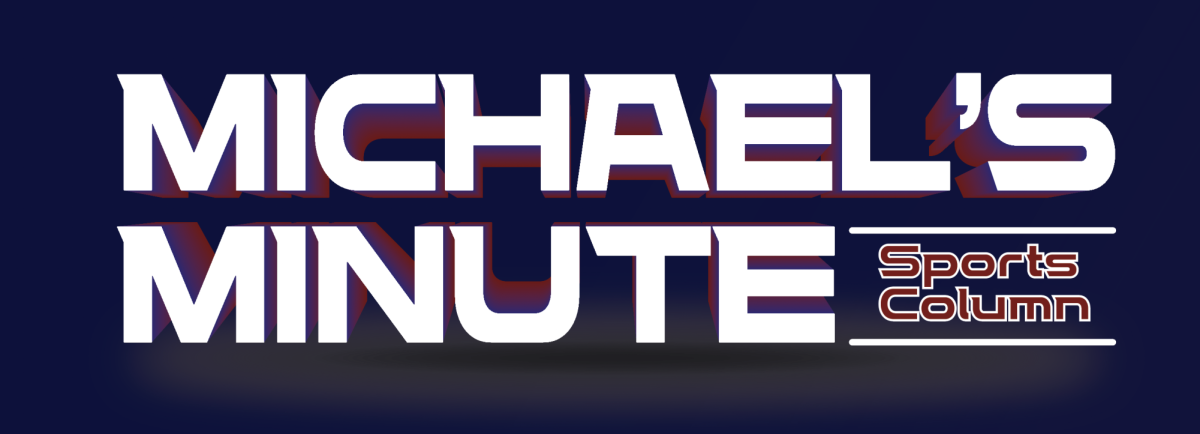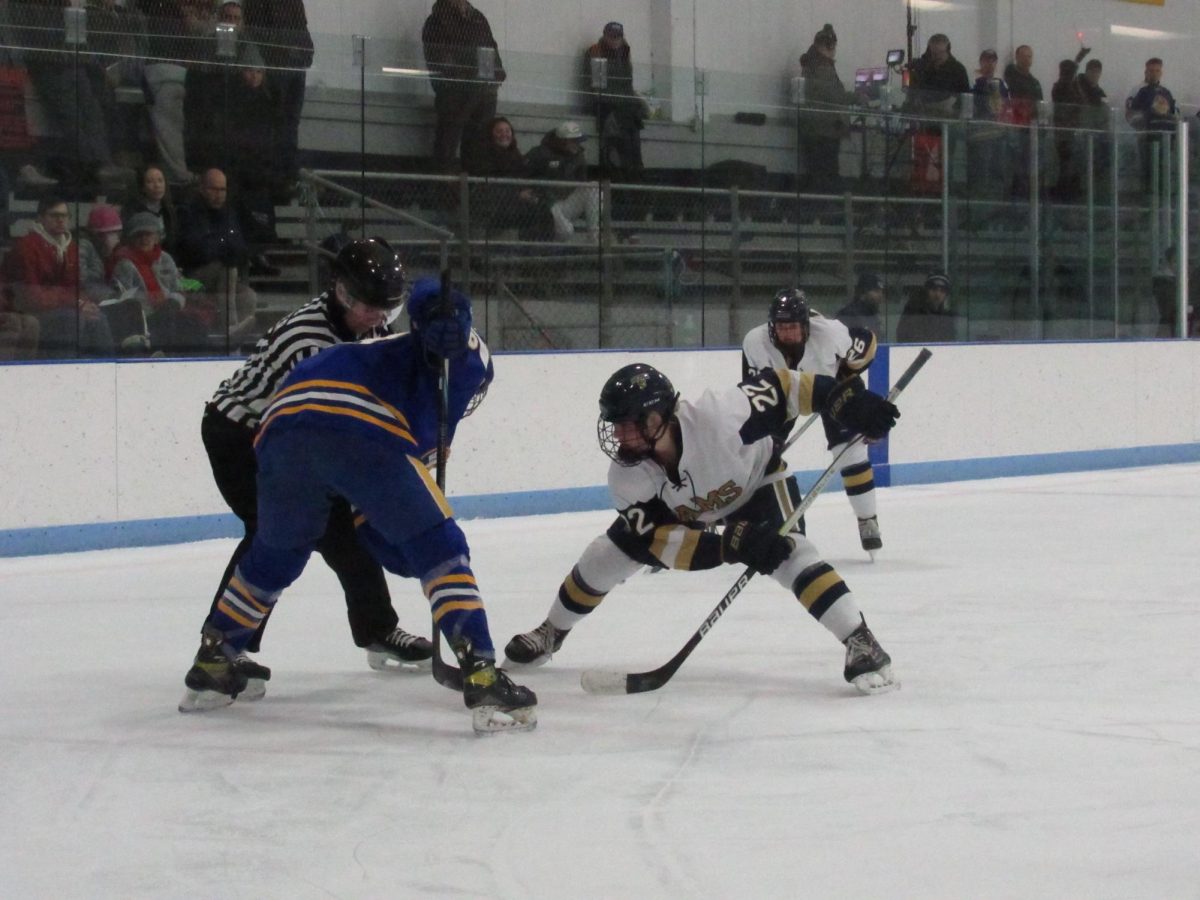The Dow Jones hit some of its lowest days in the past months, tariffs across multiple industries’, imports are being enacted and we’re in an overpriced egg epidemic. The impending doom of a recession is heightened in everyone’s minds. But alongside those financial struggles, the music industry is at an all-time high, a term the populous has coined recession pop renaissance.
Recession pop is the term used to describe the dance-pop era that punctuated the 2007-2009 Great Recession, an extended economic downturn that lingered into the early 2010s. This financial struggle was underscored by a housing market in free fall, and a low federal interest rate that strained everyday Americans’ borrowing power. The music of this time emphasized a young artist’s fervor for a carefree life. Albums, EP’s and singles had an optimistic outlook, often described as an escape from the real feelings many people were experiencing.
FM radio playing Lady Gaga’s “Just Dance” and Kesha’s “TiK ToK” backtracked elementary and middle school for Generation Z, created by artists feeling the economic impact. The songs of the time are simple, repetitive and to the point. This era was characterized by a search for high-energy, free spirited living.
“Just dance/Gonna be okay,” is the repetitive hymn of Gaga’s “Just Dance,” ushered in by references to 2000s party culture with lyrics like, “I love this record, baby, but I can’t see straight anymore/Keep it cool, what’s the name of this club?/I can’t remember, but it’s alright.”
Katy Perry began her career with hits from this era like “I Kissed A Girl,” and “Hot N Cold,” which was pop forward and fun. But her album “Teenage Dream,” which was released in 2010, was one of the most impactful, following the recession pop mode to take flight from realistic problems.
“Last Friday Night (T.G.I.F)” was one of her hits off the album, a song all about obscene party culture callbacks.
“I smell like a minibar/DJ’s passed out in the yard,” Perry sings. “Pictures of last night ended up online/I’m screwed, oh well/It’s a blacked-out blur, but I’m pretty sure it ruled.”
The “don’t care” nature of this music was made to be danced to, and drown out struggles while the economy crumbled and people’s future outlooks were turning grim. The words of B.o.B. and Hayley William’s reminded all of us that we “could really use a wish right now,” while the Black Eyed Peas reassured that “tonight’s gonna be a good night.” Music of this time was relatable, wild, simple and fun, not because artists intended to write the feel-good soundtrack to a generation’s youth and struggle, but because it was music that was needed to make it through.
This phenomenon is punctuated by a far more sinister feeling now for Gen Z: nostalgia for another recession pop resurgence. There’s a draw the music of the 2000s and 2010s that was the soundtrack to many current college students’ childhoods, all in the framework of economic uncertainty. But the excitement of music returning to form from years of lackluster releases may be misguided. The rush to call the recent onslaught of pop music icons like Sabrina Carpenter, Chappell Roan, Charli XCX and Addison Rae, the recession pop comeback seems to be a correlation, not necessarily the product of cause.
The numbers don’t lie, the Great Recession artistry raked in listens, acclaim and brought plenty of fans to every artist’s discography for the next Top 40 hit. In 2008, the music industry saw a 10.5% increase in units sold, and a 27% increase in digital track sales according to Forbes.
The music industry now is seeing a similar uptick in album releases and fans dedicated to every single and deluxe drop. Artists are making music more frequently, and there are more artists on the scene producing music.
In the first half of 2024, the music industry ballooned to have a 4% increase in revenue from previous years, grossing $8.7 billion dollars, and capped at $17.7 billion in revenue at the end of the year. As the streaming industry continued strong in its third decade in the U.S., these numbers are an astonishing sign of success for musicians.
Even more astonishing, about 84% of music produced that made it onto a global Top 200 list was linked to TikTok trends. The impact the platform has had on the industry has more artists reaching unprecedented popularity than before.
But just because the popularity and artists on the scene reflect a similar music industry swell, doesn’t mean that recession pop is back in full fashion. The content of the music is also imperative to a recession pop resurgence, and current pop reflects similarly to the escapist fun of the Great Recession.
The current pop artists of 2025 are having similar musical inclinations to the production of the past. Charli XCX’s album “brat” is the aiding party culture music that fits the bill for a revival of the Great Recession style.
“When you’re in the party b-b-bumpin’ that beat/666 with a princess streak/I’m everywhere, I’m so Julia,” Charli XCX sings.
Lyrics like these from “360” are an ode to a party culture complete with plenty of dancing and illicit activity to fill an escapism agenda. The party Charli XCX is referring to in her album’s entirety is a modern retelling akin to Perry’s Friday night and Gaga’s clubbing scenes that drowned out economic uncertainty.
Roan’s “HOT TO GO” is one of modern-days first dance phenomenon songs, similar to Cupid’s 2007 “Cupid Shuffle,” or the “Cha Cha Slide,” which soundtracked weddings and parties across the 2000s. The song is prepackaged with a dance meant to get audiences and casual listeners dancing together, an accomplishment that Roan’s track has proven to do at her venues.
“Snap and clap and touch your toes/Raise your hands, now body roll/H-O-T-T-O-G-O,” Roan sings, accompanying her choreography in the song’s music video.
The former genre staples of recession pop, like Kesha and Gaga are also returning to the industry to revive dance-pop. Kesha’s latest single “Joyride” is a similar energetic overly-produced track like her formative career’s music. Gaga’s “Abracadabra” from her latest album “MAYHEM” is not only reminiscent of tracks from 2008’s “The Fame,” but brought back a music video artistry that hasn’t been replicated since the mid-2010s.
With fresh faces and returning icons to the pop-music scene, the recipe for the music industry isn’t complete without a key ingredient that is sorely lacking from today. We are not in a recession. Not yet at least.
The U.S. might very well be on its way to another recession, but for an economic period to qualify as such, this turn must be significant, widely impactful and last at least a few months. While the music industry is reflecting patterns like it did in 2008, the economic state has not reached that level.
The prolonged economic downturn that the current Trump administration has been priming for has provided plenty of financial unrest, but constant fluctuation has absolved the current state of the economy from being in a collapse that qualifies as a recession.
This pattern of musician’s artistic vision and industry successes may be a sign of the impending economic crisis, though. Musicians priming their next projects release, may very well be dropping an album during a recession. The real-world implications on artists will reflect in the music of years to come. While pop hits of 2008 and onward are technically the recession pop time frame, those projects were the work of years prior. The recession pop we could potentially see, is a product of an industry at an all-time high in the present.
If the current music landscape shows anything, the industry is only going to continue to climb in the wake of potential economic downturns. Music enthusiasts may think they’re being satiated by the current landscape, but high energy escapist pop will continue to become a staple for years to come.
So if you’ve been putting your headphones to good use as of late, and dancing your heart out at concerts and clubs, this may just be a sign that while the economy may be on its way to far worse, your peak playlist may be around the corner.


